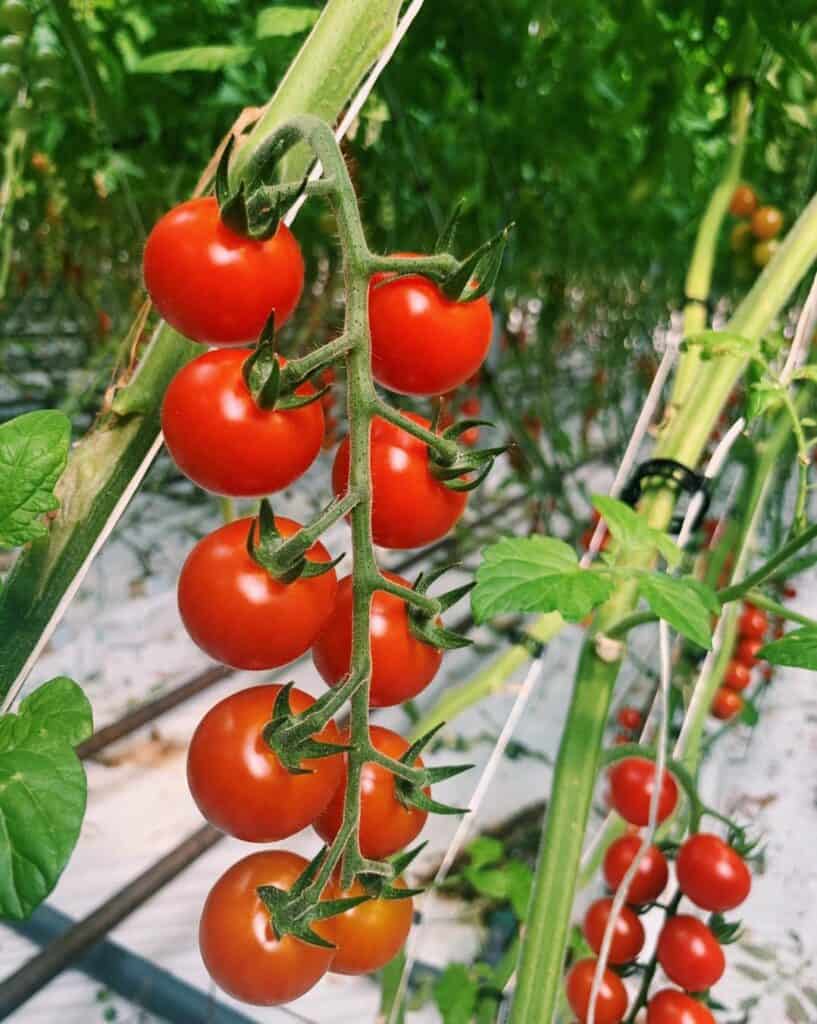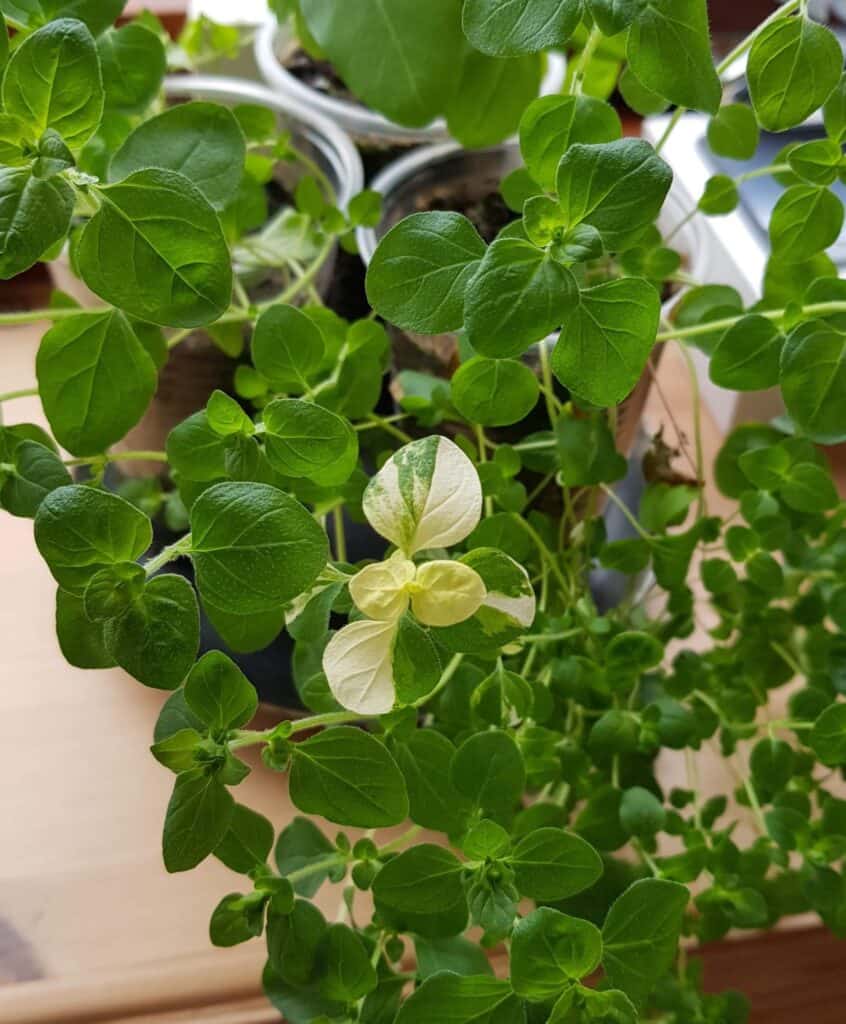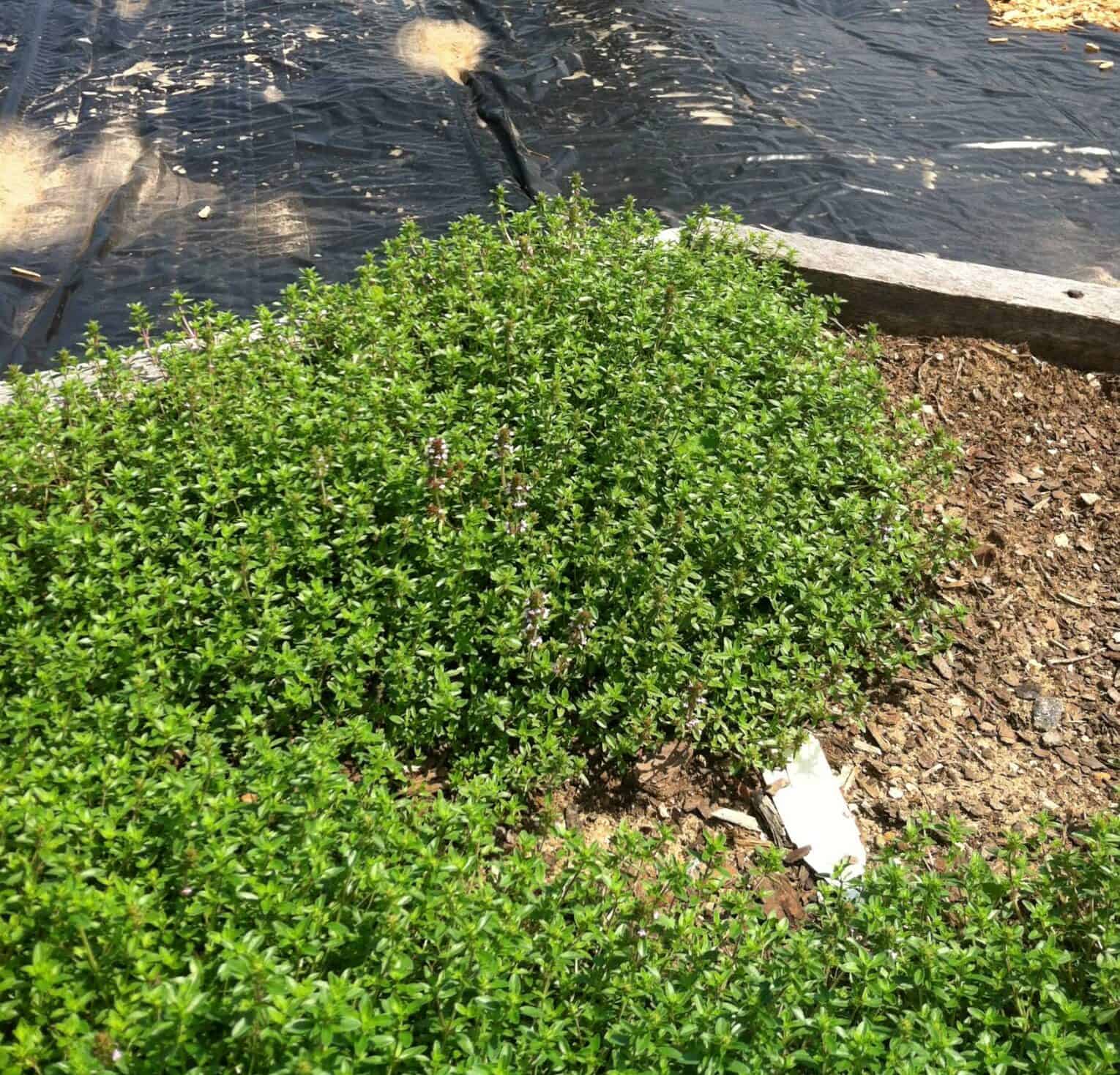Do you know that Thymes are not just great add-ons to your dinner plate due to their fragrance but also a great companion in the garden for other plants?
Thymes can be forever better half partners for veggies, fruits, and herbs due to their wonderful qualities, but some plants detest their presence as neighbors!
Generally, Thyme companion plants include cabbage, tomato, potato, eggplant, strawberry, blueberry, rosemary, oregano, lavender, and sage. Meanwhile, chives, basil, and cilantro are some of the annoying associates of Thymes.

When my father first planted Thyme, it was mainly for infusing the fragrance in our meals. So, now whenever my mother cooks using Thyme, it kicks my nostalgia again.
This nostalgia for me has been a source of inspiration for growing Thyme with other plants. If you also want to list some of the good and bad Thyme companions for your garden, keep reading.
Table of Contents Show
Benefits of Companion Planting With Thyme
Thyme (Thymus vulgaris) is a herbaceous perennial plant of the mint family Lamiaceae.
Thyme is a speedy grower that attains a short stature, up to 6 to 12 inches tall, and spreads almost 12 to 24 inches.
This drought-tolerant plant accepts sandy soil with acidic to alkaline (6.0 to 8.0) pH and thrives in full sun exposure.
The flexible growth habit of Thyme helps it grow without any problem with other plants.
Besides, this companionship offers multiple benefits to the plant growing side-by-side with Thyme.
- Thyme’s aroma repels harmful pests like cabbage worms, vegetable worms, and many more.
- Thyme attracts bees and other pollinators to the garden with its attractive white flowers during spring and summer.

- Thyme is also great for filling gaps in the garden beds due to its small habit, allowing many companion plants to grow at once.
- Companion planting with Thyme prevents the growth of weeds that take up the nutrients from the soil.
- Planting thyme with some vegetable crops helps improve those vegetables’ taste.
Best Thyme Companion Plants
When choosing the companion plants for Thyme, select the ones that will grow in the same conditions.
However, both plants should not compete for space and nutrients.
Shallots, roses, and salad burnet are a few with similar preferences of conditions like Thyme. Here is a list of good-to-go plants that Thyme accepts and helps for growth.
1. Vegetable Companion Plants
Thyme not only improves your culinary skills but shall refine the qualities of the vegetables in your garden!
I have listed a few of the vegetables that go great with Thymes. Take a look at them.
Cabbage
Thyme’s companionship is not only limited to cabbages but the whole members of its family, Brassicaceae.
Pests such as cabbage worms, slugs, beetles, and cabbage loopers often limit the productivity of this veggie in your garden.
However, if you plant them with Thyme, the pungent smell shall be a repellant for the incoming pests.
Thyme also attracts ladybugs that kill aphids and act as pollinators on a cabbage farm.
Since cabbages require a lot of space for growth like Thymes, ensure you maintain at least a gap of 24 to 36 inches between each plant of Thyme and cabbage.
Tomatoes
The tomato hornworm can bring blemishes to the harvesting fruits. It is among the threats that tomatoes face during the fruiting season.
However, Thyme, with its aromatic powers, can repel this pest from your tomato plant.

When planting Thyme with tomatoes, maintain a gap of no more than two feet between the plants.
This shall prevent competition between the plants and allow immense growth for your tomatoes.
Potatoes
Potatoes are susceptible to beetles and various fungal diseases that can reduce the yield and flavor of potatoes.
However, wasps love the smell of Thyme and fall among their main pollinators.
Additionally, this can be beneficial for potatoes, and the wasps as they get free lunch treats in the form of potato beetles.
You will obtain good harvest results if you plant potatoes and Thymes a foot apart! Also, planting potatoes along with the Thyme plant helps improve potatoes’ taste.
Eggplants
Do you know what else loves munching on your eggplants? Garden Moths!
Beetles, aphids, spider mites, and hornworms are the common pests in an eggplant.
However, they hate the smell of Thyme, which can be a natural deterrent for these pests.
Remember to maintain a distance of 2.5 feet between the plants while planting in rows. This gap shall be enough to prevent both plants from competing for nutrients.
2. Fruit Companion Plants
If you immediately don’t plant Thyme with these fruits, all your hard work while growing them may go in vain!
Take notes as I have listed a few fruits that go well with Thyme!
Strawberry
Strawberry is one of the favorite crops of farmers. However, these red berries are infested by marauders and different other worms.
However, with its smell, Thyme planting with strawberries can hinder the interference of these pests.

Generally, a distance of 1.5 feet shall be enough to keep between Thymes and strawberries. This distance and Thyme’s trailing habit help control the weeds in your strawberry garden.
Also, the size of the Thymes provides shade to the strawberries and keeps the soil moist.
Blueberries
The benefit of Thyme companion planting is not just limited to repelling pests.
Instead, it also attracts pollinators like honeybees that help pollinate blueberries.
Blueberries prefer acidic soil, but this shall prove no problem to Thymes due to their flexible pH requirements.
Since blueberries are bushy, you need to plant Thymes 2 to 2.5 feet apart from the blueberry bushes.
This way, they shall repel most of the pests, such as mosquitoes belowground, and control the growth of annoying weeds.
3. Herb Companion Plants
If you wonder if planting Thymes with other herbs shall hinder the plants’ growth due to similarity in certain aspects, that’s not the case.
Here are a few herbs that can be the best Thyme partners.
Rosemary
As Rosemary and Thyme belong to the same family, both have similar growing conditions and thrive best as companion plants.
Both have insect repelling properties and act as a protective shield to your garden by preventing your crops from harmful insects and pests.
However, you must prevent planting them in the same container as some rosemary varieties can easily cover small Thymes.
Grow them in a group by selecting the perfect small-sized varieties for rosemaries.
Oregano
Thyme and oregano have similar growing conditions, so that they can be good friends.
Moreover, the height advantage of Thyme acts as a blanket to oregano and gives it a beneficial shade.
Similarly, the shade provided by Thyme keeps the soil moist and aids in oregano’s growth.

But you must avoid feeding them too much water; otherwise, they can rot.
Also, pinch their flowers so they can be bushy and cuddle each other.
Lavender
Lavender is a valuable herb for decorative purposes and also as a culinary herb. Like Thyme, it prefers arid soil and hot climates.
Therefore, lavender can be a perfect companion flower for Thyme in hot climates.
In addition, the beautiful blooms of Thyme and lavender never fail to attract honeybees and butterflies to your garden.

Thyme also does not like cold weather, so it is better to plant them together when the weather is warm enough.
So, do not be late to adorn your garden with these purple blooms that perfectly complement each other.
Sage
It is another herb that is an excellent companion to varieties of Thyme, like lemon thyme.
Sage prefers the soil that has the drier side; therefore, it can flourish in the soil of Thyme.
Like Thyme, sage has the property of repelling insects like beetles, carrot flies, and snails from the garden.
When planting Thyme and sage together, it is better to grow Thyme on the edges of the sage plant due to its creeping habit.
With that, what could be a better duo than sage and Thyme for safeguarding your garden crops?
Worst Thyme Companion Plants
Thyme is an excellent companion to many plants, as it provides more advantages than it receives.
However, it does not go well with some of the plants.
| Bad Companions of Thyme | Reasons |
|---|---|
| Chives | Chives flourish in well-drained, moist soil, whereas Thyme prefers sandy soil. |
| Basil | Basil requires moist soil, whereas Thyme needs dry soil to thrive. |
| Cilantro | As cilantro loves moist soil, the soil requirement for cilantro and Thyme are opposite. |
| Fennel | It is a poor companion plant due to its strong smell. |
| Mint | Mint needs more water than Thyme. |
| Parsley | Thymes need dry soil while Parsley plants grow well in moist soil. |
Proven Tips for Companion Planting of Thyme
Looking at the good relationship of Thyme with other plants, you may try it.
But before that, here are some proven tips that may be useful while planting two plants together.
- Choose the plants that prefer similar low soil moisture, around 18°C temperature, and full sunlight conditions.
- If you somehow plant Thyme with its bad companion, maintain a gap of two to three rows to reduce the clash.

- Don’t plant Thyme with the same family crops as far as possible to reduce the incidence of diseases affecting both plants.
- Use balanced NPK 10-10-10 fertilizer in the growing season for couple plants.
- Select such plants that can grow in a warmer season, like Thyme.
- If possible, use organic insecticides such as neem oil that have a wide range of effects on pests for both plants.
Organic insecticides have less effect on pollinators, so they are safer to use!
- Maintain the required spacing between the plants so that none of them can get a chance to rob the nutrients.
- Water the Thyme once every 10–15 days and maintain around 40% relative humidity.
Conclusion
Effective gardening requires a good knowledge of arranging plants that will benefit each other and bring good results to your garden.
Therefore, I recommend you try companion planting with Thyme to bring out a good harvest.
However, you need to be mindful to choose only good companions.
If you wish to enrich your garden with other companion plants, you may need to read Lavender and Marigold.
Happy Gardening!
